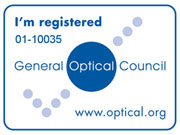Dry Eye Clinic
Dry Eye
Dry eye is the loss or reduction of the eye's ability to produce normal tears. It is one of the most frequent causes of visits to optometrists. A variety of factors may cause or contribute to this problem some are age-related, some are related to the environment. It is a common and treatable condition.
Diagnosing Dry Eye
Dry eye can come from a number of causes, both physical and environmental. One common cause is when tears glands slow down tear production – a normal occurrence that happens with age, especially in women going through menopause.
Tear quality may also be the cause of dry eyes. In a normal tear, there are three components – water, mucous, and oil. These three components work together to provide the proper amount of moisture, distribute moisture evenly across the cornea, and prevent evaporation that can cause eyes to become dry. If any of the three components is compromised, the eye may not get the nourishment and protection it needs. Most commonly, there is not enough oil in the tears, leading to the evaporation that causes dry eye. A common cause of this meibomian gland dysfunction or MGD. This causes the small glands at the tip of the eyelids to block and cease to function properly.
Diminished tear production may be associated with certain medications, such as antihistamines, birth control pills, diuretics, cardiovascular medications, pain relievers, and anti-inflammatories, and certain medical conditions, such as diabetes, rheumatoid arthritis, or thyroid problems.
Symptoms of Dry Eye
Regardless of the cause of dry eye, the signs and symptoms are similar. An optometrist can diagnose dry eye through a comprehensive exam, observing tear flow and quality, as well as examining the cornea and eyelids for the following:
•
Eye redness
•
Eye irritation
•
Eye stinging or burning
•
Watery eyes
•
Difficulty wearing contact lenses Your optometrist will evaluate your eye condition to determine if it is dry eye and a variety of underlying conditions that may be causing dry eye.
Treatment for Dry Eye
Dry eye is treated in a number of ways, to help soothe the symptoms or treat the underlying cause. The most common forms of treatment for dry eye include:
•
Minimize drying: avoid dry situations, such as an overheated room, wind or smoke. Outdoors, wear wraparound glasses to reduce drying effect of the wind.
•
Artificial tears: comforts eyes by supplementing natural tears, commonly used for mild cases of dry eye.
•
Heat Massage for the eyelids: This uses a specially devised ‘Eyebag’ which is heated in a microwave and laid across the closed eyes. This melts the oily block at the surface of the gland duct. The lids are then massaged to express the fluid within the duct hence clearing the blockage and allowing the gland to work properly.
•
Surgery: plugs may be inserted to block the drainage path of tears. This method is intended to conserve the tears your eye does produce for a longer period of time.
Tel: 01375 373000
Services





Copyright © EUIN STEELE
Design by Computer Confidence


